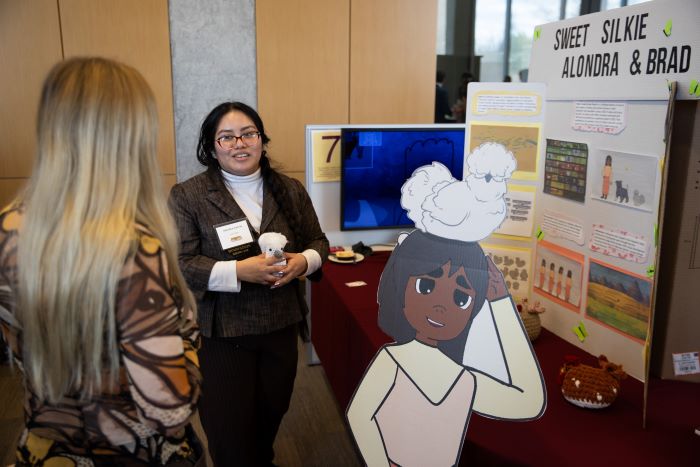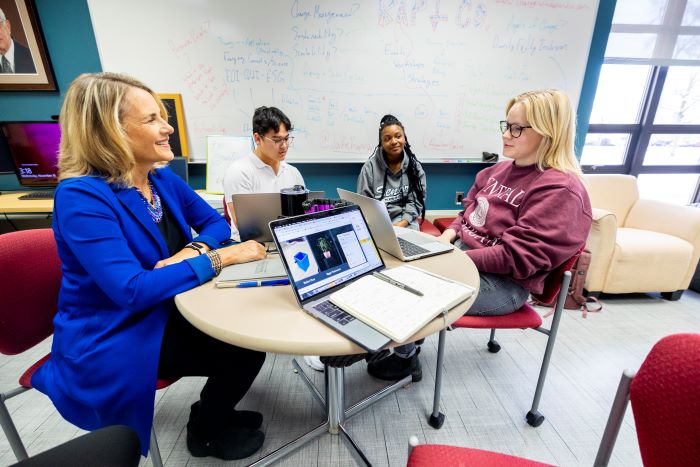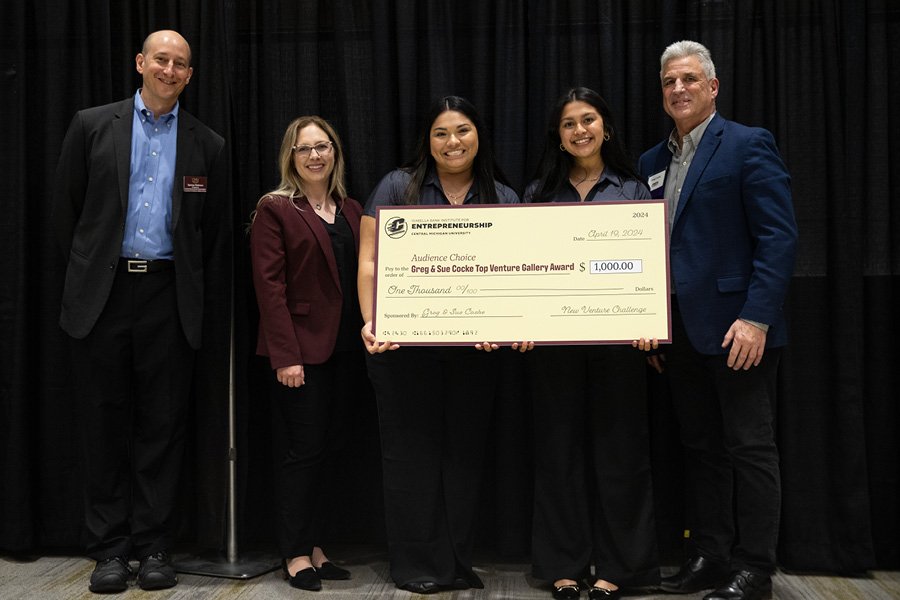
Start up
Passion. Potential. Pitches. Don't miss any of the 2025 New Venture Challenge excitement.
Tune in Friday, April 11 at 1 p.m. for great ideas and fierce competition. Then, join the judges, mentors, spectators and teams as they see who is going home with thousands of dollars in venture financing. The awards broadcast begins at 6:30 p.m. and one team will walk away as the overall best venture.
Central Michigan University’s College of Business Administration is the home of the Isabella Bank Institute for Entrepreneurship and the first Department of Entrepreneurship in the state of Michigan. We are a student-centric hub where experiential, curricular, and external entrepreneurial opportunities intersect.
Our mission is to maximize student success by fostering a campus-wide entrepreneurial mindset that promotes inter-disciplinary collaboration and the creation of new ventures.
We aim to create innovative programming, boost cross-campus and ecosystem collaboration and provide a comprehensive mentoring program.
Our institute provides extracurricular opportunities and is open to all undergraduate and graduate CMU students.
Are you interested in becoming an entrepreneur?
Every journey is unique. Explore the opportunities that interest you.
As severe storm tracking and predictions improve, an element of those storms remains a mystery: hail. Predicting when the balls of ice will fall from the sky is complex, and Central Michigan University's John Allen is on a mission to find answers.
"There isn't a way of forecasting how big hail will be the day before, or even the day of, it's occurrence," said Allen, a faculty member in Earth and Atmospheric Sciences. "We don't have a good handle on why one storm produces small hail and another will produce really big hail."
But Allen and his student researchers aim to change that. Better forecasts could mean big savings. By having a better understanding of the processes that lead to hail, Allen is hoping the research will lead to improved forecasts and warnings.
"I'd like to get to a point where we will be able to warn people to put their car in the garage today because we're expecting hail," Allen said.
With support from the National Science Foundation, Allen and a team of student researchers are analyzing data to better understand what happens within a thunderstorm to identify the mix of ingredients that cause hail.
"We know hailstorms peak between 3 and 6 p.m. in the United States, as that's the hottest part of the day," Allen said. "We're looking to see if there is are conditions that produce larger hail, or if there is something in the wind profile or instability between the Earth's surface and the upper levels of the atmosphere."
Allen noted that hail is the most expensive natural hazard associated with severe storms, causing more than $10 billion a year in damage. The destruction largely impacts building roofs and vehicles, but it can also affect agriculture and vulnerable ecosystems.
"Small hail can fall in large volumes, creating inches of hail fall," Allen said. "This can cause devastation to vegetation and crops, like we saw with hail a few years ago impacting the cherry crop in the Traverse City region in northern Michigan."
In addition to studying hail, Allen also is researching severe thunderstorms and climate change, as well as approaches to automated cold and warm front detection.

Explore special opportunities to learn new skills and travel the world.

Present your venture and win BIG at the New Venture Challenge.

Boost your entrepreneurial skills through our workshops, mentor meetups and pitch competitions.

Learn about the entrepreneurship makerspace on campus in Grawn Hall.

Present a 2-minute pitch at the Make-A-Pitch Competition and you could win prizes and bragging rights!

Connect with mentors and faculty who are here to support the next generation of CMU entrepreneurs.

Are you a CMU alum looking to support CMU student entrepreneurs? Learn how you can support or donate to the Entrepreneurship Institute.